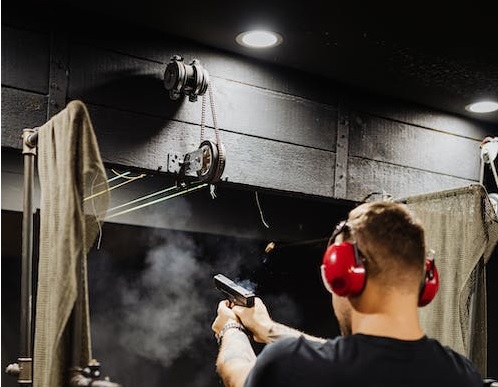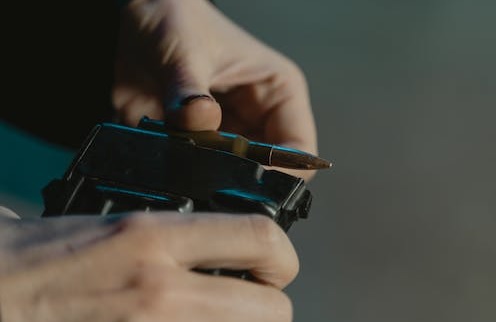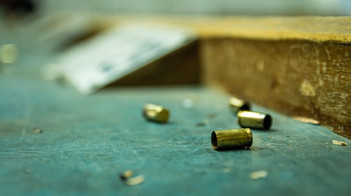Common Firearm Malfunctions, and Firearm Parts You May Need to Fix Them
Feb 7th 2023
You don’t need to be a gunsmith or a range safety officer to be able to diagnose common firearm malfunctions. With a little legwork, you can diagnose and rectify most problems without even the need for substantive repairs.
At the same time, keep in mind that all action types and operating mechanism are different. Nonetheless, the issues and malfunctions mentioned here are fairly universal (at least among autoloaders, whether gas or recoil operated), so being familiar with them can help you solve them, either at the range, or later at the bench with the requisite firearm parts.
Failure to Fire
Failures to fire are exceptionally rare these days, as advancements in primer technology have made them more or less a thing of the past. They’re slightly more common with rimfire cartridges, but still very uncommon.
Nonetheless, they do occasionally happen. If you experience one, keep the firearm pointed downrange for at least a minute.
After a minute has elapsed, cautiously open the action and inspect the cartridge. If there is a big dent in the primer, you may have a bonafide dud.
If the primer’s dent is shallow, you may be looking at a legitimate firearm malfunction - but you may not need any firearm parts to fix the issue. When you get home, disassemble and clean the firearm; remove the firing pin and clean the breach face, as fouling can interfere with the firing pin or hammer, causing a failure to fire.
If the problem isn’t a dirty gun, you may have either a broken firing pin or a fatigued firing pin spring. Replace both of these and the issue should rectify itself.
Failure to Extract
A failure to extract occurs when the firearm does not remove the spent cartridge from the chamber, often resulting in a double feed issue. This can easily become a dangerous situation.
Failure to extract can be caused by user error. Oftentimes, users will “limp wrist” a gun (common with handguns), not keeping their grip firm enough to allow the slide to pull the spent cartridge from the chamber.
However, failures to extract can also be caused by weak magazine springs, damaged magazines, broken extractors, or fatigued extractor springs. If you are confident the problem is not you, try shooting your firearm with a different magazine or inspect the extractor and spring.
Failure to Eject

A failure to eject occurs when the firearm fires and extracts the cartridge, but does not fully eject it.
This can also occur when users limp-wrist the firearm. However, in this case, a dirty or corroded chamber can also cause failures to eject.
Clean your gun first, and inspect for fouling buildup in the chamber and around the action and ejection port. If the firearm still fails to eject after cleaning and inspection, next look to the ejector and ejector springs. These gun parts can also cause a failure to eject.
Failure to Feed
Failure to feed occurs when the firearm’s action does not properly feed a new round into the chamber after one round has been fired, extracted and ejected. It can also occur upon attempting to charge the chamber with the first round off the magazine.
There are a number of conditions that can precipitate a failure to feed. Factors that don’t have to do with the firearm’s parts themselves include a dirty gun (especially a dirty chamber) and damaged cartridges.
A prime cause of failures to feed is an improperly seated magazine. This is likely the first thing you should check if you experience this issue.
However, damaged magazines (specifically feed lips) and fatigued magazine springs are often to blame if there is a mechanical issue.
Double Feed
Double feeding can occur when a magazine attempts to load two rounds at a time into the chamber, which typically results in a jam.
Faulty or damaged magazines can be the issue here. Another potential issue is the recoil spring, which can cause double feeding if it interferes with the timing of the gun’s firing.

Hammer Follow
Hammer follow is an issue that occurs when the firearm’s action operates more too quickly. When the disconnector fails to engage, it allows the hammer to follow the firing pin into battery instead of staying cocked.
When this occurs, the firearm will not fire the next time you pull the trigger because the hammer does not remain cocked. There are several firearm parts you can look into here.
Inpsect the sear, hammer, disconnector, and springs for signs of damage. Replace any of these if they are worn or fatigued and the issue should resolve itself if the gun was firing properly beforehand.
Slide Lock Failure
Slide lock or bolt catch failures are similar issues on autoloading firearms. These issues occur when the action fails to lock open after the firearm discharges its last round. This is more of a procedural issue than a hazard to safety, but it can complicate reloading, especially if your gun must be loaded through the open bolt.
More than likely this issue is occuring because either the slide lock or the bolt catch is worn and is not engaging the slide or bolt carrier (respectively). More than likely, the issue is the slide lock or bolt catch spring. If these are fatigued replace them.
Replacing these slide lock or bolt catch itself can also fix the problem, especially if they show signs of wear and are not catching as intended.
Other Firearms Parts You Should Keep at the Ready
Obviously, there are all sorts of other firearms malfunctions that occur that might be platform or action specific and which are not covered here. This is intended to cover the majority of issues faced by many gas and recoil operated semi-automatic firearms, but there are others.
Regardless, the main source of failure for all firearms, regardless of action type or cartridge, is a spring of some sort or other. Springs are almost always the first parts to fatigue on any gun, whether they’re recoil springs, ejector springs, magazine springs, or even the mainspring on a muzzleloader. Look to these first to diagnose and issue and you will more than likely identify your culprit.
Either way, if you are looking for firearms parts, we carry them. Take a look through our collection firearms accessories and parts at the previous link and if you need help finding something, feel free to get in touch with us at 610-250-3960.

